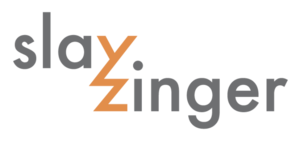I first met Jason Bishop in design school when we studied Industrial Design together at Georgia Tech. We went on to both work as student interns for the campus research center CATEA (the Center for Assistive Technology and Environmental Access). CATEA focuses their efforts on developing assistive products and technologies for individuals with functional limitations.
Although Jason freelanced in web work beforehand, he began working in professional front end web development during his time at CATEA. This interest led him to pursue a career in web design and development after graduation. Recently, Jason has teamed up with his business partner, Mitchell Lane, and they decided to take their knowledge and experience to the next level to launch their own web concept firm. The new company is called Nightsprout and below documents my conversation with Jason about it.
Jason Bishop's Personal Site
?: We know each other from studying Industrial Design together at Georgia Tech, what factors brought you to a career in web development?
Jason: My education is in Industrial Design, so I've had a long-standing interest in design. I got interested in web design because it is a similar field (research, usability considerations, etc) but doesn't require you to jump through hoops designing a physical product often requires.
My first jobs out of college were with web development companies and I was exposed to the startup scene in Atlanta. Haven't looked back since. I really enjoy working for new operations where I have a lot of control over my work.
Jason's Sample Project 1
Jason's Sample Project 2
Jason's Sample Project 3
?: How did you and your business partner meet up and could you describe the resulting creation of Nightsprout?
Jason: We met working at the same company together. For some pieces of software, I served as the design lead with him functioning as developer. We worked really well together and our projects were really well received. We decided to take the relationship beyond that project and see what we would be capable of making.
Our first project was an experimental zombie game that integrated with FourSquare. It was a lot of fun and we thought the natural progression would be to form a business and see where that takes us.
?: How would you describe the unique services offered by Nightsprout?
Jason: We are a boutique app development firm for clients and our own concepts. We do the entire app development process from start to finish, with specific foci in design and code. Some of the projects we handle include: creating custom web apps, creative (branding/collateral/etc), user interface/user experience/information architecture, etc.
?: So Nightsprout handles both the design and the coding areas of web development, correct?
Jason: Yes, we can do Ruby/Java/PHP and other stuff (of course HTML/CSS). We like to use rails if the need is a web app but we are flexible.
?: Are your ideal projects in the realm of corporate identity or conceptual and pushing the limits of technology?
Jason: We are somewhere in between the two. We are definitely not doing a corporate brochure sites at the moment, but we aren’t doing something purely conceptual either. Right now we are building web apps positioned in the SAAS space.
?: Could you expand on building web apps positioned in the SAAS space?
Jason: For people who don't know, SAAS stands for "software as a service". To simplify, this typically entails an up-front licensing fee to use the software, typically hosted in the cloud. One example of a company with a SAAS model is SalesForce.
With respect to Nightsprout, we basically do two things. First, we will help people or businesses interested in setting up a web property achieve their goals. This might include developing an app for them (and launching it), branding and social media campaigns, or other things. We can do it all.
The second part of Nightsprout, which we do in parallel, is to work on our SAAS projects. We're both familiar with how SAAS products are made and marketed so it is a natural thing for us to work on. Plus, it's really fun work. We get to "be our own clients" to determine what to build, and hopefully make some money as well.
?: Does nightsprout have plans to venture into other peripheral web design areas such as iPhone/iPad or Android apps?
Jason: We don't have anything specifically on the road map, but we have many ideas for different web apps we'd like to tackle though. Web apps could mean expanding into a lot of different areas, but technology wise we don't have a set path. We have an interest in working on iPhone/iPad and Android apps in the future.
Take a look at the Nightsprout website and contact them for any web development needs. The founders of the company Jason Bishop and Mitchell Lane's personal work can also be viewed online.
